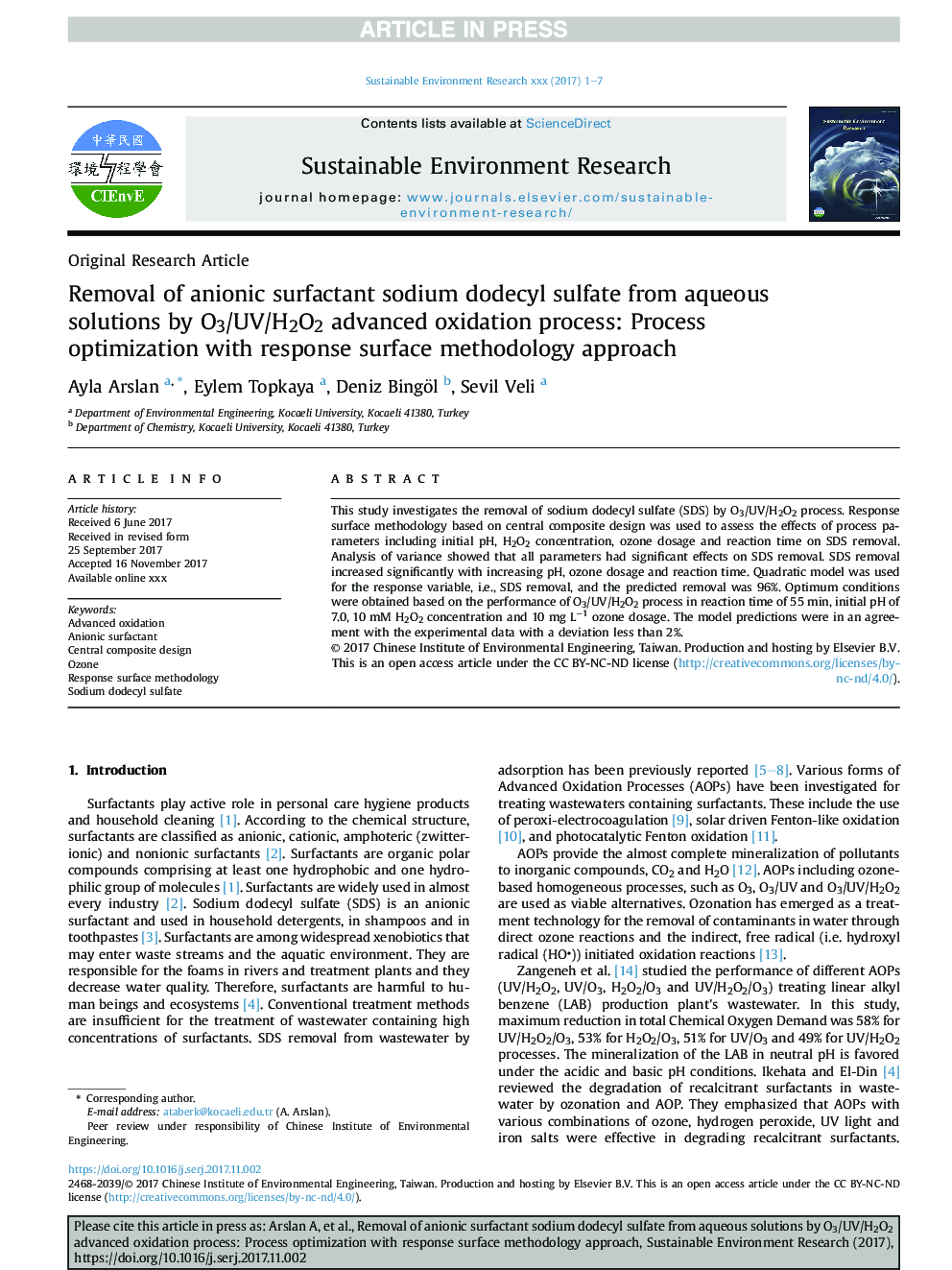| Article ID | Journal | Published Year | Pages | File Type |
|---|---|---|---|---|
| 8862933 | Sustainable Environment Research | 2018 | 7 Pages |
Abstract
This study investigates the removal of sodium dodecyl sulfate (SDS) by O3/UV/H2O2 process. Response surface methodology based on central composite design was used to assess the effects of process parameters including initial pH, H2O2 concentration, ozone dosage and reaction time on SDS removal. Analysis of variance showed that all parameters had significant effects on SDS removal. SDS removal increased significantly with increasing pH, ozone dosage and reaction time. Quadratic model was used for the response variable, i.e., SDS removal, and the predicted removal was 96%. Optimum conditions were obtained based on the performance of O3/UV/H2O2 process in reaction time of 55 min, initial pH of 7.0, 10 mM H2O2 concentration and 10 mg Lâ1 ozone dosage. The model predictions were in an agreement with the experimental data with a deviation less than 2%.
Keywords
Related Topics
Life Sciences
Environmental Science
Environmental Engineering
Authors
Ayla Arslan, Eylem Topkaya, Deniz Bingöl, Sevil Veli,
